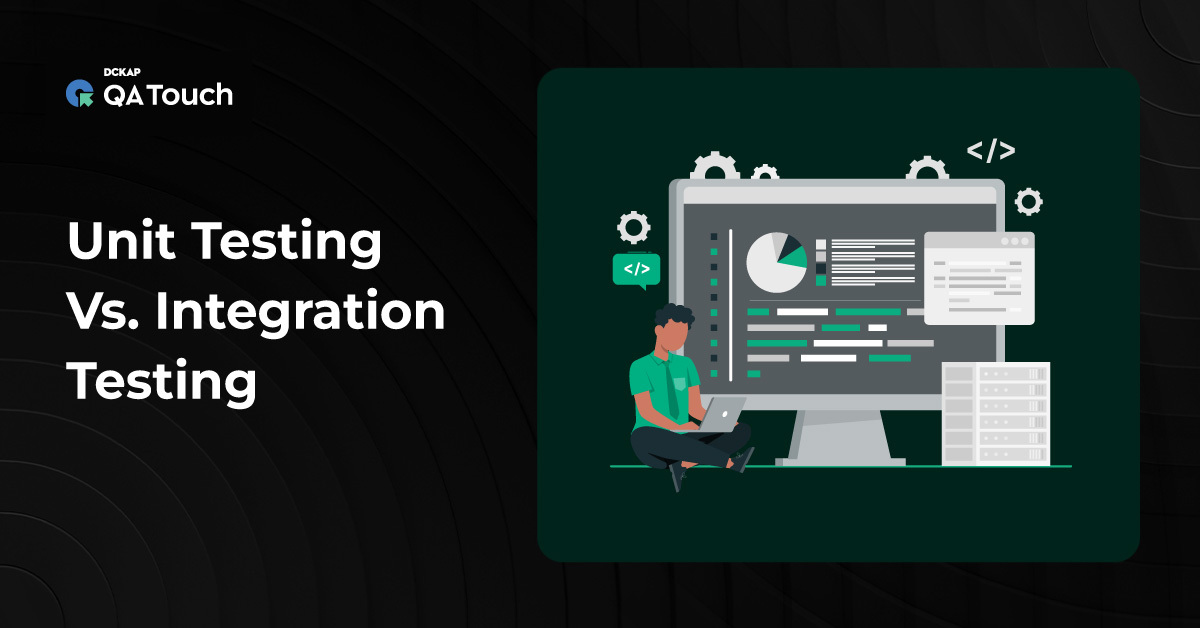In server-side programming, it is common to use languages like Ruby, Python, or Java for web app frameworks. Each language combines two approaches to fulfill the request tasks initiated from the server. Developers have the critical task of designing these web applications for real-world uses. Programmed for client side-servers, requests are tested for different apps like e-commerce shopping, web mails, and calculators.
Without testing the developer cannot deliver functional web apps. Several iterant crop up and upset the OS. With the advent of RSpec, tasks have become a tad simpler. But what happens to Minitest which also can accelerate testing procedures?
When it comes to the process of generating software, testing is an essential step in safeguarding that the resulting codes are of high quality and reliable. When it comes to the success of a project, testing outlines that are both properly designed and thorough may make all the difference.
Minitest and RSpec are well-liked options among Ruby on Rails programmers when it comes to testing platforms. These two frameworks come with their benefits and best features, doing it tough to decide which one would be the finest for the project. This article aims to present a comparative analysis of Minitest as well as RSpec, enabling readers to make an informed decision regarding the more suitable option and to meet the requirements of your testing.
Let us check further into the features and perks offered by every structure, considering the code readability, the convenience of use, the performance of the testing suite, and many other aspects. You will be having a better knowledge of the distinctions between Minitest as well as RSpec you will be able to choose the appropriate testing structure for the application you are developing.
As per the findings of current studies, the market for automated testing is expected to range a value of around 28 billion dollars by the end of 2024. The incorporation of both these into test automation will not serve any purpose other than to make the automation process more effective and less prone to mistakes.
What do we understand by Minitest?
Minitest is a streamlined testing framework made specifically for the Ruby developing language. It offers developers an easy and simple-to-understand method for working on tests, which enables them to assure the high quality and accuracy of their code. It is an example of a spec engine that has all of its features fully implemented. It connects to minitest and creates a smooth bridge between the assertions made during testing and the requirements provided in the specification like JUnit or test: unit, which allow programmers who have worked with several different testing outlines to feel comfortable making use of it.
A few of the important features of Minitest are mentioned below:
-
Faultless integration
The most notable feature of Minitest is its faultless integration with the built-in statements and test runners provided by Ruby. It offers a whole selection of assertion techniques, which gives developers the ability to build tests that are easy to read and systematic. Additionally, parallel test implementation is reinforced by Minitest, which may dramatically shorten the number of times required to run a test suite, particularly in larger projects.
-
Test: Compatibility with Other Units
As with its prototype, Test: Unit, is capable of supporting proclamations and testing cases. It is not too difficult or uncomfortable to convert an existing test suite into Test::Unit format if it was made in a similar language.
-
The Syntax of Expectation
A syntax analogous to RSpec’s hope syntax is reinforced by MiniTest in addition to the verify arrangement. You cannot get a 3rd party library since the syntax for what is expected is mostly a matter of personal choice for every programmer (or team).
-
Test evaluation
Presentation benchmarking is automatically supported by MiniTest straight from the boxes. ” You can declare that your coworker is a newbie.isn’t substituting your nonlinear algorithm with an explosive one!” it says in the manual.
-
Mocking and Stubbing
MiniTest includes both mocking and breaking as standard functionality. There is no need to include any additional standalone libraries.
What is RSpec?
RSpec is a behavior-driven development (BDD) made for Ruby that has seen widespread adoption. It provides developers having the ability to construct tests in a manner which are understandable by humans which explains the intended behavior of their code. RSpec is an important part of the software development process because it fosters cooperation between software developers, testers, and stakeholders. It does this by offering a common language through which these parties can discuss and confirm the expected performance of the product.
Testing in Ruby, and more especially with the help of RSpec, is crucial for several various reasons. In the first place, it assists in identifying faults and problems at an earlier stage in the expansion process. In the long term, programmers will be able to save time and effort while testing that covers a variety of possible circumstances. This allows programmers to find and correct flaws before they become more important problems.
A few of the important features of RSpec are mentioned below
-
Ability to use natural language
The potential of RSpec to characterize the behavior of the code that is being tested by making use of natural language structures, like “describe” and “it,” is one of the most important characteristics of this tool. Not just for the developer who first develops them, but additionally for any other team members or customers who evaluate or update the code in the future, this makes the test cases more verbose and simpler to comprehend.
-
RSpec provides a wide range of matters
In addition, RSpec offers a broad variety of matches, which makes it possible for developers to compose assertions in a manner that is more easily understood by humans. Matchers like this make it possible to make expressive comparisons and expectations, which in turn makes it simpler to spot and understand test failures.
-
RSpec for both Unit and Feature testing
It includes a variety of hooks and configuration choices, which enables you to tailor your testing environment to meet your particular requirements in a manner that is unique to you. You can easily zero in on certain parts of your application, whether you’re developing it or debugging it, by making use of the tagging mechanism that RSpec provides.
This allows you to run single tests or groups of tests on demand. In addition, RSpec has seamless integration with a variety of additional testing tools and frameworks, such as FactoryBot and DatabaseCleaner, which are used for controlling the state of databases during tests and generating test data, respectively.
It is a dilemma for a developer to choose between the two.
- Rspecs is a behavior-driven and specific writing framework.
- Mini tests are test-driven and create benchmarks.
What if you know the basic differences between Minitests and RSpecs? Which one is better for testing? Which one will boost the web app performance at the client-server end? Do Rails applications score over Minitests for a project?
Let’s break down the essentials for the two frameworks with pros and cons. It will help you to manage testing methods with authority and enhance your skill sets. As you discover the better one, explore the framework’s prime features.
RSpec: What works and what does not
The good news is that it is easy to figure out and read what the test is verifying. It makes the task crystal clear for the developer. It is also a time-saver to accomplish critical project deadlines. The target is based on behavior-based development related to the app code.
- Defining metaprogramming, the CLI run is smooth.
- A codebase can have a mix of various styles and is flexible.
- This is an upgraded version of the testing tool for stubbing. If you are already applying the same, methods calls are intuitive.
- Create multiple different scenarios for testing to achieve ideal targets. Feel like sharing contextual tests and hooks? Go for it, it will give amazing results.
- Running the tests line by line is good. Faster test runs are always valuable.
- Reference documentation is not required often if one is familiar with the features.
RSpecs is not without its tonal faults
- Learning is a consuming process as it is not all about Ruby. But is a great option to upgrade your knowledge, and skills and become a test specialist.
- All tests have a massive memory. This footprint takes longer to bring results. Developers have to navigate around these problems.
- Refer to libraries for fixtures if the request is ‘out of syllabus.’ Often some tasks are out of the box and need external assistance to be performed.
- Testing DSL does not kickstart as it is better in Minitests. The unfamiliarity of RSpecs can be a deterring factor at times.
Now let’s check Minitests which is already being used for app testing before RSpecs came into the picture.
- If you have tried both frameworks, one big difference between the two is the speed of Minitests. It has a better and more agile running time which is an advantage for complex projects.
- All tests are 100% Ruby-based. Hence, it is a default setting in your mind to work around and take up client-side server requests.
- It comes with (Ruby) assertions and fixtures.
- The capability to give several examples and assertions is power-packed.
- A few line codes work well for simpler tests. It makes the intention of the developer clear.
MiniTests lack the following:
- The stubbing is not close to RSpecs nor is it intuitive. And this is a definite disadvantage.
- CLI is not very useful. It may prove to be difficult to run a particular example in the test procedure.
- A matrix cannot be created for different scenarios as in the case of RSpecs because of the nested nature. It does not even help with shared examples.
This is why Mini tests have alternatives like RSpecs.
In perspective
Both RSpecs and Minitests have similar goals. The former goes a step further with readable specifications. The web needs to have the closest conduct with English. However, the primary objective of the team is to encourage writing the test. Failure and success are measured by the codes for the program. The aim is also to check minor and major capabilities. An experienced developer can make a choice based on the differences between RSpecs and Minitests. Often automated software testing has its challenges to overcome.
How to decide which one is for you?
If you already have an existing project with a codebase built you may already make up your mind about which one to use. After knowing the pros and cons of both the test-specific tasks can be performed.
If it is a new project, there are strong chances to explore RSpecs, unless Minitests is a market fit and good to go. When it comes to choices many developers prefer to go with the familiar devil than jump not the deep blue sea! If you wish to experiment here is what can be done for comparative details between them.
Practical experience using both options
Choose two similar apps. One web app can be used for RSpecs and the other for Minitests.
The latter already comes with Rails, there is familiarity with the commands. If you have never used RSpecs before the procedure could be a little longer. But this should not discourage you to explore it. In the Rails app, RSpecs commands are already installed. Avoid using this as it can come with difficulty to conduct the tests if it has old Ruby objects.
Your testing suite can be bold with the right framework. To gain more clarity, run the test regardless of its failure or success. As you improve you will get the necessary validations with the intended expectations.
Ending thoughts
You feel the differences are subtle or the pros and cons can be handled. Both have their strengths and weaknesses. Did you also notice that both frameworks work on almost similar principles? The bottom line is performance. If you look into the details even if Minitests is faster, Rspecs scores when it comes to minor detail.
What are your thoughts? Have you used them both? Or are you struggling to conclude? This post can give some answers and help you with the next indomitable project to handle.










